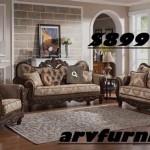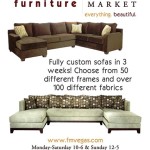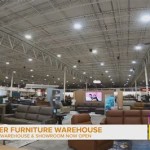Is Bush Furniture Good Quality? An In-Depth Analysis
Bush Furniture is a widely recognized brand in the ready-to-assemble (RTA) furniture market. Its popularity stems from its accessibility, affordability, and a broad range of styles catering to diverse needs. However, the question of its overall quality often arises, particularly when compared to more expensive, fully assembled furniture options. An objective evaluation requires examining several factors, including materials, construction, design, durability, and customer feedback.
The RTA furniture market operates on the principle of providing consumers with furniture at a lower price point by shifting the assembly burden to the buyer. This model inherently involves compromises, particularly in the materials used and the complexity of the construction. Bush Furniture generally falls within this paradigm, utilizing engineered wood products like particleboard and medium-density fiberboard (MDF) as primary materials.
These materials offer cost advantages and can be effectively used to create aesthetically pleasing and functional furniture. However, their inherent properties differ significantly from solid wood. Engineered wood is generally more susceptible to damage from moisture and heavy impacts, and it typically lacks the inherent strength and longevity of solid wood.
The quality of Bush Furniture, therefore, must be assessed within the context of its intended use and price point. It is not reasonable to expect the same level of durability and longevity from a piece of RTA furniture made of engineered wood as one would from a solid wood counterpart costing several times as much.
Material Composition and Construction
A crucial aspect of evaluating Bush Furniture's quality lies in dissecting its material composition and construction techniques. The primary material used is typically particleboard or MDF, often covered with a laminate or veneer finish. The quality of this laminate or veneer significantly impacts the furniture's appearance and resistance to scratches and wear. A thicker, more durable laminate will generally provide better protection and a longer lifespan.
The construction methods employed are also critical. Bush Furniture often utilizes cam locks and dowels for assembly. The effectiveness of these connection points depends on the quality of the hardware and the precision of the pre-drilled holes. Loosely fitting cam locks or misaligned holes can compromise the structural integrity of the piece and lead to instability or premature failure.
Edge banding is another area where quality variations can be observed. Properly applied edge banding prevents moisture from seeping into the core of the particleboard or MDF and also enhances the furniture's aesthetic appeal by concealing the raw edges. Poorly applied edge banding can peel or chip, exposing the underlying material and detracting from the overall appearance and durability.
The hardware used, such as hinges, drawer slides, and handles, also plays a role in the furniture's overall quality. Higher-quality hardware will generally function more smoothly and last longer than cheaper alternatives. Careful examination of these components can provide insights into the manufacturer's commitment to quality and long-term reliability.
The thickness of the engineered wood used in different parts of the furniture also contributes to its strength and stability. Thicker panels are generally more resistant to bending and warping, particularly in larger pieces like bookshelves or desks. Understanding the specifications of the materials used is key to assessing the potential lifespan and functionality of the furniture.
Assembly precision is essential for any RTA furniture. Bush Furniture's quality is partly determined by the accuracy of their manufacturing processes and the clarity of their assembly instructions. If the holes are drilled precisely and the instructions are easy to follow, the resulting piece of furniture will be more stable and durable than if the assembly process is fraught with difficulties and inaccuracies.
Design and Functionality
Beyond the materials and construction, the design and functionality of Bush Furniture contribute significantly to its perceived quality. The brand offers a wide array of styles, from traditional to contemporary, catering to various tastes and needs. However, the design's practicality and ergonomics are equally important as its aesthetic appeal.
Well-designed furniture is not only visually pleasing but also functional and comfortable to use. For example, a desk should have adequate workspace, ergonomic keyboard placement, and convenient storage options. A bookshelf should be stable and capable of supporting the weight of books without sagging or tipping. These functional considerations directly impact the user experience and contribute to the overall perception of quality.
The layout and accessibility of storage spaces are also important factors. Drawers should glide smoothly, and shelves should be adjustable to accommodate items of different sizes. Cabinets should have doors that open and close easily and securely. Attention to these details demonstrates a commitment to creating furniture that is not only attractive but also practical and user-friendly.
Bush Furniture often incorporates features such as wire management systems in desks and concealed hinges in cabinets. These thoughtful additions enhance the furniture's functionality and appeal to consumers who value convenience and organization. The inclusion of such features can be seen as a sign of attention to detail and a desire to provide a higher-quality product.
However, it's important to consider the scale of the furniture in relation to the intended space. Overly large or bulky furniture can overwhelm a small room, while furniture that is too small may appear out of place in a larger space. Careful consideration of dimensions and proportions is essential for creating a cohesive and functional living or working environment.
The sturdiness of moving parts, such as drawers and doors, is directly related to the design and the quality of hardware employed. If the design does not properly account for the stresses that the moving parts will undergo, even good quality hardware will not prevent eventual failure. A good design will distribute stress throughout the structure and employ hardware appropriate for the task.
Durability and Longevity Expectations
The primary differentiating factor that sets Bush Furniture apart from more expensive options is the level of durability and expected longevity. Engineered wood products are not as resistant to wear and tear as solid wood, and they are more susceptible to damage from moisture and temperature fluctuations. Therefore, it's crucial to set realistic expectations regarding the lifespan of Bush Furniture.
With proper care and maintenance, Bush Furniture can provide years of reliable service. However, it's important to avoid exposing it to excessive moisture, direct sunlight, or extreme temperatures. Spills should be cleaned up promptly, and furniture polish should be used regularly to protect the finish. Avoiding placing excessive weight on shelves or in drawers can also extend the furniture's lifespan.
It is important to note that the quality of the assembly process can significantly impact the furniture's durability. Improper assembly can weaken joints and lead to premature failure. Careful attention to the instructions and the use of appropriate tools are essential for ensuring that the furniture is assembled correctly and will withstand regular use.
Repairing damaged engineered wood furniture is often more challenging than repairing solid wood furniture. While minor scratches and dents can often be repaired with touch-up markers or fillers, more significant damage may require replacing the entire piece. This is a key consideration when evaluating the long-term cost-effectiveness of Bush Furniture.
The laminate surface, if well maintained, significantly impacts the furniture's durability. Scratches, chips and moisture contact should be avoided to prolong the furniture's lifespan. Routine cleaning using only appropriate cleaning liquids is necessary to preserve the furniture's integrity and aesthetic appeal.
Ultimately, the perceived value of Bush Furniture depends on the individual's needs and expectations. If affordability and style are primary considerations, and the furniture is used in a low-traffic area with minimal wear and tear, it can be a perfectly acceptable choice. However, if durability and longevity are paramount, investing in higher-quality furniture made of solid wood may be a more prudent long-term investment.

Bush Furniture Somerset 60 Double Pedestal Desk Fresh Walnut

Bush Furniture Cabot 60 L Desk And Hutch With Storage Harvest Cherry

Bush Home Somerset 72w Office Desk With Drawers

Bush Home Cabot 60w Computer Desk With Drawers

Bush Furniture Cabot 60 L Desk And Hutch With Storage Ash Gray

Bush Furniture Somerset 3 Position Sit To Stand L Shaped Desk With Hutch 72 W Hansen Cherry Standard Delivery

Bush Home Salinas Hall Tree With Shoe Storage Bench

Bush Furniture Somerset 60 W Office Computer Desk Platinum Gray Standard Delivery

Bush Furniture Somerset 72 W 3 Position Sit To Stand L Shaped Desk Fresh Walnut Standard Delivery Office

Bush Business Furniture Series A48w Corner Desk Oak


